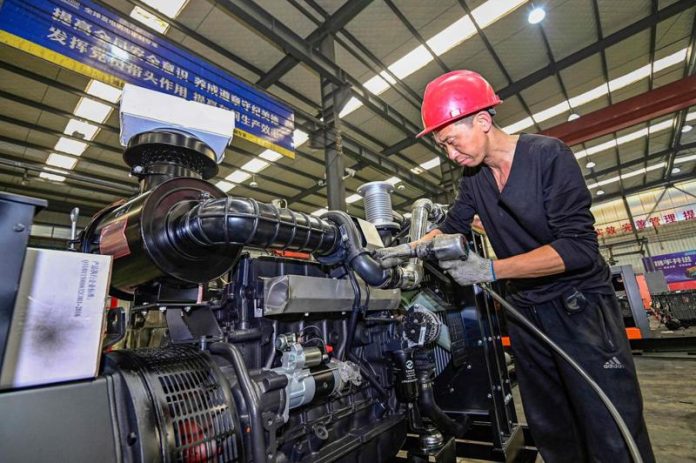Official surveys showed on Tuesday that growth in China’s manufacturing and services sectors slowed in April, according to Reuters.
Signs of a slowdown in activity after strong growth in March underscore fragile demand and the challenges facing policymakers, even as strong first-quarter GDP data have reduced the urgency to ramp up stimulus measures.
The National Bureau of Statistics (NBS) manufacturing purchasing managers’ index (PMI) fell to 50.4 in April from 50.8 in March. New export orders grew at a much slower pace, while employment continued to decline, the NBS data showed.
Indicators of business activity in the catering, capital market services and property industries were in contraction.
Another private Caixin factory survey on Tuesday showed that manufacturing activity grew faster as new export orders rose. The Caixin survey is thought to be more focused on smaller, export-oriented firms than the much broader official PMI.
“Both the manufacturing and services PMI indexes are near the line of 50, reflecting that the current momentum of economic expansion is mild.”
A separate business survey by consultancy China Beige Book found that all major indicators, from revenues and profits to prices and hiring, slowed in April. At the same time, corporate borrowing declined despite a drop in lending rates.
April’s results say China’s 2024 growth prospects are already losing altitude.
China announced that it would reinforce support for the economy using policy tools including banks’ reserve requirement ratio (RRR) and interest rates, Politburo, a top decision-making body of the ruling Communist Party, reported on Tuesday. Another meeting, known as the third plenum, would be held in July to deepen reforms and promote China’s modernisation, Chinese media reported, citing the Politburo meeting.
With the US Federal Reserve and other developed economies in no hurry to cut interest rates, China could face a longer period of sluggish external demand. Beijing continues to struggle with trade barriers, as the US accuses China of exporting its industrial overcapacity.
Analysts argue that the country’s immediate problem stems from a prolonged downturn in the property market and rising local government debt, which has undermined household and investor confidence. Support measures aimed at improving the property sector have failed to accelerate the recovery, a key reason why China observers remain sceptical of a full-scale economic revival in the near future.
IMF Asia-Pacific Director Krishna Srinivasan stated on Tuesday that it would be helpful if China rolled back industrial policies to reduce resource misallocation and overcapacity.
While an economic growth in the first quarter provided a much-anticipated boost for the rest of the year, weaker March data, such as retail sales, industrial profits and property investment, left investors worried about China’s ability to spark a broader and more sustained recovery in demand.
China set a GDP growth target of around 5.0% for 2024. However, analysts have called it ambitious without additional stimulus.
Julian Evans-Pritchard, head of China economics at Capital Economics, stated that the ongoing cyclical recovery would persist in the short term, mainly due to fiscal support.
But there are plenty of downside risks, including the threat of foreign trade barriers, a deeper downturn in property construction and a pullback in off-budget local government spending on infrastructure.
